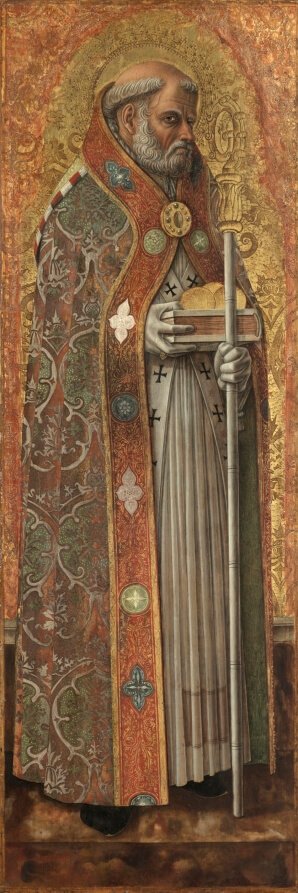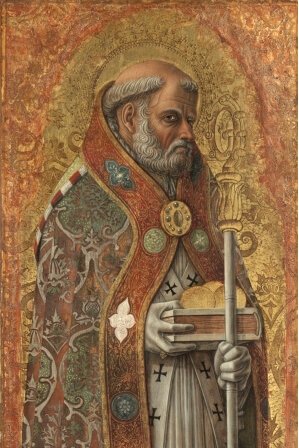
I mentioned a few posts ago that I want to talk about some of the historical, religious, and mythological antecedents to Santa Claus. As today is Saint Nicholas’s Day, this seems like a perfect time to get started. St. Nicholas of Bari (270-343) was a Greek/Turkish bishop and saint who became associated with gift giving due to a legend involving him paying three poor girls’ dowries.1 He is also often associated with children due to another legend and has taken on characteristics of popular pagan figures from Mediterranean and Scandinavian cultures, which is more common a phenomenon than one might think.2
Over a period of centuries, St. Nicholas slowly evolved into the figure we now know as Santa Claus through a variety of circumstances. These included the Protestant Reformation seeking to eliminate Christmas festivities (which didn’t really work out as intended), the Saint Nicholas-loving Dutch immigrating to the New World, the nineteenth-century rise of family values, the work of prominent writers, artists, and institutions (such as Thomas Nast, Washington Irving, and the New York Historical Society), and the mass dissemination of imagery through magazines and newspapers.3
The image of Saint Nicholas I’ve featured today, Saint Nicholas of Bari by Italian Renaissance artist Carlo Crivelli (c. 1430-1495), was painted for religious rather than folkloric reasons before the saint had taken on many of the connotations he has today. However, I chose this work because of its beautiful, decorative qualities, specifically the richly-embroidered cope and the ample use of red and gold, both of which I think foreshadow his future associations quite nicely. Crivelli hasn’t always had the best reputations in art history because of his somewhat unorthodox style that doesn’t truly fit into either the Middle Ages or the Renaissance. However, he’s actually one of my favorite artists precisely because of that style. You can read my longer article about Crivelli at the link below. You may also be interested in my articles about the history of Santa Claus imagery for HeadStuff and The Collector.
Notes
- Green, Caitlin. “St Nicholas of Myra: A Guide to the Real Santa Claus“. The History of Santa Claus and Father Christmas website, 2004 & 2015. ↩︎
- Green, Caitlin. “A Guide to the Evolution of St Nicholas and his Cult“. The History of Santa Claus and Father Christmas website, 2004 & 2015. ↩︎
- “Saint Nicholas and the Origin of Santa Claus”. St. Nicolas Center, 2002-2023. ↩︎


